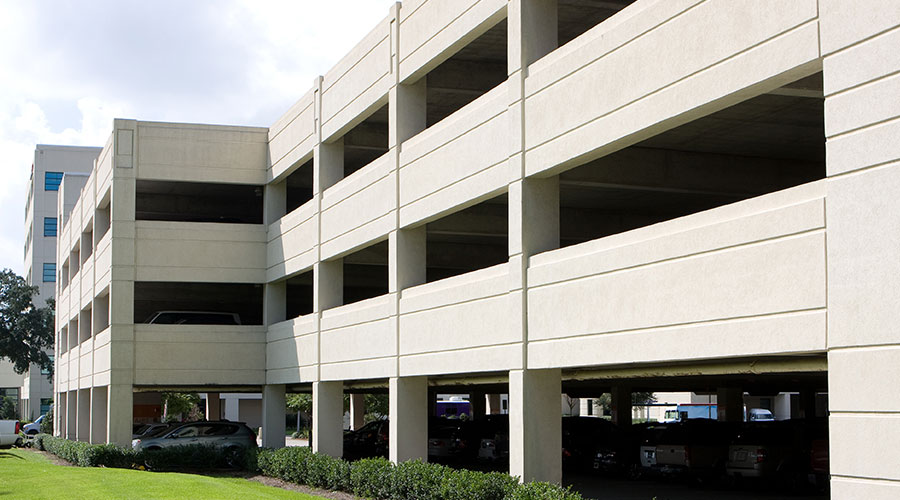Bridging the Gap
Managers look for new opportunities and added benefits as MRO product distributors seek stronger ties with facilities
Managers have more than a few options when it comes to working with product and equipment distributors. Agreements between facilities and distributors run the gamut of possibilities, from single-source agreements with national distributors to multiple arrangements with a combination of both national and local suppliers.
But whatever the arrangement, a few essential factors govern the decisions about whom maintenance and engineering managers buy products — price, fast and reliable service, and personal relationships with distributors. More often today, managers find that product and equipment distributors are expanding their product lines, helping customers identify inefficiency and generally being more aggressive in their efforts to bridge the gap between warehouses and facilities.
“They are trying very hard to get into things like value-addeds,” says Rich Hertlein, manager of engineering and maintenance at Bethesda North Hospital in Cincinnati, referring to his organization’s contract with a national distributor. “They want to be the only phone number we dial. They’re pretty determined.”
Especially in these times of fiscal frugality and economic uncertainty, maintenance and engineering managers are under constant and growing pressure to make the most of every product purchase, and increasingly, they are asking that distributors go beyond products to help them reduce their inventories and find greater efficiency, both in purchasing products and in carrying out an organization’s maintenance mission.
“We rely on a distributor to be an expert not just on a product, but in a whole product type,” says Kerry Leider, manager of facilities for the Duluth (Minn.) Public Schools.
A Variety of Purchasing Models
Any given department’s method of working with distributors of maintenance, repair and operation (MRO) products and equipment is likely to be much different than the next department’s.
For example, Hertlein says his 1-million-square-foot hospital works primarily with one national distributor for MRO products and supplies, and as needed, with a small number of system-specific vendors and local distributors.
On the other end of the spectrum are the Duluth Public Schools, where there are no national agreements. Instead, Leider says, he buys products for the district’s 40 schools through “hundreds” of distributors, mostly through a formal bidding system. This system comes with challenges, he says.
“It’s not necessarily a benefit from a general management standpoint,” he says, adding that record-keeping challenges exist in dealing with so many companies.
On the other hand, he says, the system helps the public school district support a larger number of local businesses than it could under a national agreement with a single distributor.
Whatever the structure, managers routinely ask distributors to provide more in key areas, and price is not always the first consideration.
“If someone can sell a product for $2 less but they can’t deliver it when I need it, it doesn’t do much for us,” says Johnny Morris, director of engineering at Roanoke (Va.) Memorial Hospital. “Price has to play a big part, but it’s not the only factor.”
Beyond Product
More managers are asking MRO distributors to go beyond training, and many distributors are responding. For example, in preparation for pending energy deregulation in Virginia, Morris says the hospital began looking in earnest for energy-efficiency ideas. As part of the effort, it called upon one of its distribution partners — a national HVAC equipment manufacturer — for help in identifying areas of energy efficiency improvements.
“If we can save 1 cent per kWh, that’s equal to about $1 million a year,” Morris says. “In healthcare, that’s going to make a big difference.”
And, Morris says, the hospital’s national distribution partner has become more active in consulting on maintenance management issues. For example, the partner brought in a motor manufacturer representative to survey the hospital and help identify efficiency upgrades involving motors.
The distributor also is expanding its training offerings, he says. But the challenge in buying into distributor-provided training is ensuring the impartiality of the information.
“We tell them we don’t want (the training) to be a sales seminar,” Morris says.
Personal Touch
Managers also emphasize that one element of the buyer-distributor relationship that will always be important is a personal touch in the relationship, the ability for someone in a facility to call a distributor and know that the person answering the phone knows the caller, knows the facility and understands the sometimes dire nature of a situation.
“It’s important to have vendors available to us who stand behind their products, know us well enough and understand how busy we can be,” Leider says.
Managers say they often are wary of distributor representatives stopping by to make cold calls on facilities.
“As a rule, we don’t take walk-ins,” Morris says. “We ask them just to leave their information or their Web site. But managers know that in some cases, distributors have insights into products and technology that managers and supervisors might not.
“Locals like to stop in sometimes,” Hertlein says. “And often, they can create an order that way, where they know your needs before you do.”
And national distributors are going to great lengths to strengthen personal relationships with product buyers and specifiers in facilities. At the Santa Monica-UCLA Medical Center, MRO product buyers work with several large national and regional distributors, says Bob Riley, manager of facilities and utilities.
“It has been a great help because, in each case, they can go to one person,” Riley says. “The all have a single point of contact. Perhaps most important of all, national distributors who can personalize their service add a valuable element to an already invaluable benefit — their power to deliver a wide range of parts and equipment quickly, anywhere in the country.
“Their strength is in their ability to get it to me the next day,” Hertlein says.
Evolving Relationships
The relationship between MRO product buyers and distributors continues to evolve as other players enter and influence the purchasing process.
The Internet has given maintenance and engineering departments a valuable resource for gathering information on products, a service that distributors once performed more frequently.
Home centers have stepped in to provide a quick, often lower-cost source of parts, supplies and equipment. Managers seem especially drawn to the quick-access benefit that home centers provide because it allows them to minimize the amount of inventory they need to keep on hand.
“I don’t know if distributors feel threatened (by home centers), but they should,” Hertlein says. His hospital has agreements with home centers, and his staff often has purchased MRO products there. Managers often can cite the closest home center to their facilities, and in many cases, that store is within a mile or two.
Such challenges are apt to continue affecting distributors’ efforts to bridge the gap between products and facilities. More importantly, they could give managers more opportunities to find savings.
The Local Touch
A distributor of maintenance, repair and operation (MRO) products who can help out a maintenance department in a pinch goes a long way toward securing future business. And more often than not, managers say, that distributor is a local business.
“Price is important, but so is service,” says Rich Hertlein, manager of maintenance and engineering at Bethesda North Hospital in Cincinnati. “When there is a crisis, it’s nice to have a a guy you can get out of bed to help.”
For example, Hertlein’s department faced such a crisis recently when two motors burned out in an air-handling unit in the hospital’s surgery area — in the middle of the night. A phone call to a local motor distributor got the owner out of bed but resulted in two motors being picked out and delivered in time for the department to install them so the surgery area could continue operating.
A national distributor might have been able to to find and ship the needed motors when the phone call came in, Hertlein says. But technicians then would have had to wait for them to be shipped or would have had to go pick them up when the business opened the next morning.
Either way, a national distributor probably couldn’t have matched the local company’s delivery time, which in this case was the key factor, not price.
“Nobody is going to ask what a 40-hp motor costs, or what the shipping and handling charges are at 1 a.m.,” he says. “First, they want the motor.”
|
Related Topics:











